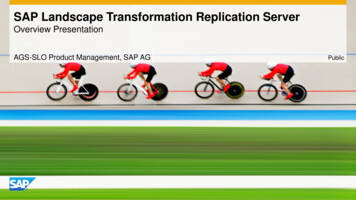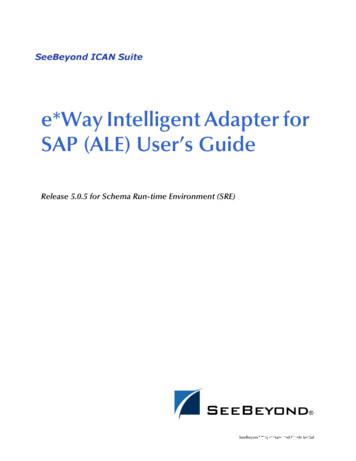Amen Kush SAP Specialist 704-207-4878 - Atlanta Public Schools
Amen Kush SAP Specialist 704-207-4878
Caron Quick Facts Nationally recognized chemical dependency treatment facility Addiction treatment services (50 yr history) Student assistance services/prevention (20yr history) Offers a full spectrum of treatment programs (adolescents to seniors) (gender specific) Caron will help find a the right fit 2
Current Trends The Good News o The use of prescription drugs continues to decline o There continues to be a decline in alcohol consumption including binge drinking o Marijuana use did not increase Areas of concern o Use of electronic cigarettes is high o Perceived harm in taking drugs continues to decrease 3
4
Drugs In Our Schools 17% of high school students smoke, drink or use drugs at school. 81% of teens say drugs are easily obtainable. 60% say they can get them at school.
Kids could be easily fooled
Common Slang Terms blitzed tanked Crunked lubricated smashed Pre-game
Get the Facts Two out of every three students have consumed alcohol by end of high school Children under the age of 21 drink 11% of the alcohol consumed in the U.S. 9
Alcohol Trends Drinking games Pre-Gaming Alco-Pop drinks Alcohol and energy drinks Pocket Shots Boozie Bears Alcohol eye-ball shots Extracts (Lemon, Mint) Hand Sanitizer 10
Binge Drinking The CDC released a report that one in five high school girls engage in binge drinking.
Alcohol Trends
Alcohol Trends BLAST- “Binge in a Can” Scotch in a Can “Whipanol” Dirty Sprite Snobars
Smoking Alcohol Due to the alcohol bypassing the digestive system, it can lead to alcohol poisoning much faster. Could cause lung irritation, inflammation and infection.
Get the Facts More than 380,000 12-to-13-year-olds and almost four million 14-to-17-year-olds have smoked. 6.7% of high school seniors are daily smokers. 46 % of illicit drug users smoke tobacco 15
Electronic Cigarettes Use of e-cigarettes among middle and high schools students doubled between 2011 and 2012 Increased from 5% to 10% in high school Students (Unregulated) 16
Tobacco Current Trends Cigarette use dropped 33% from 2000 to 2011. During that same time period, people's consumption of other types of tobacco products climbed 123%
Common Slang Terms
Get the Facts Today, one in every 15 high school seniors is a daily or near-daily marijuana user 40% of high school students have tried Marijuana. 19
MarijuanaHow is it smoked? 20
Edible Marijuana “Bud Butter”/“Canna Butter” Brownies Green Dragon
Marijuana Edibles
Butane Hash Oil Dabbing, Wax, Dabs, Oil, Errl, Earwax, Budder, or Shatter Oils usually have the consistency of molasses and are amber or golden in color
Marijuana & Perceived Risk 24
Why is Marijuana Abuse so Difficult to Tackle Amongst Youth? Belief that it’s harmless There is a culture attached to its use Belief that “everyone smokes weed” 25
Synthetic Drugs Synthetic Cannabinoids and Cathinones Sold as “herbal incense,” “plant food” or “bath salts” with warning labels that state “not for human consumption” 26
Signs of Use Strong clove smell Coffee grinder – finer the powder, easier to smoke Drug paraphernalia (pipes, screens, etc.) Typically smoked Physical signs include: – – – – – – Loss of control Lack of pain response Pale skin Seizures Profuse sweating Elevated blood pressure and heart rate – Uncontrolled, spastic body movements 27
Common Slang Terms Love Drug X MOLLY plugging Triple Stack Candy Flippin
MDMA (Ecstasy) A synthetic drug with amphetamine-like and hallucinogenic properties Repeated use may damage the cells that produce serotonin
Get the Facts Molly is perceived to be pure MDMA powder/crystal form A lot of it is “bath salts” methadrone (stimulant) or cathinone
Common Slang Terms Pharm party oxy Kibbles and Bits Bricks Rittys Z bars
Get the Facts Between 1995 and 2005, treatment admissions for prescription painkillers increased more than 300% Nearly 1 in 12 high school seniors reported nonmedical use of Vicodin; 1 in 20 reported abuse of OxyContin
Get the Facts Every day 2,500 youth age 12 to 17 abuse a pain reliever for the very first time More teens abuse Rx drugs than any illicit drug except marijuana
Why do they use? To party, to escape reality, to experiment, or to relieve boredom, to help them cope To deal with pressures, self-medicate, belief that it is not illegal, less shame and fewer side effects Because “parents don’t care as much if you get caught.” 34
Where Do They Get Them? More than 70% of people who abuse Rx painkillers say they get them from family or friends About 40% of 12th graders say that painkillers are fairly or very easy to get 35
Heroin Processed from morphine, an opiate that reduces sensitivity to pain Can be injected, snorted, and smoked Cheaper than opiate based prescription drugs Heroin deaths in Metro Atlanta doubled last year 36
Signs and Symptoms of D & A Use Dramatic changes in behavior Negative changes in schoolwork (missing school, - grades) Increased secrecy about possessions and activities Use of incense, room deodorizer, perfume/cologne Subtle changes in conversations with friends (coded messages) 37
Signs and Symptoms of D&A Use New friends Change in clothing choices Increase in borrowing Drug paraphernalia Bottles of eye drops New use of mouthwash or breath mints Missing Rx drugs Apathy 38
An ounce of prevention Move to prevention orientation Support staff can influence more students through this perspective Develop interventions that help ALL students cope in difficult times Focus on the developmental assets 39
Developmental Assets Represent the relationships, opportunities, and personal qualities that young people need to avoid risks and to thrive Research shows that the more assets less likely to engage in a wide range of high-risk behaviors and the more likely they are to thrive Have power for all young people, regardless of their gender, economic status, family, or race/ethnicity Levels of assets are better predictors of high-risk involvement and thriving than poverty or being from a single-parent family 40
Level of Assets Percentage of 6th- to 12th-Grade Youth Reporting Selected High-Risk Behavior Patterns, by Level of Developmental Assets High Risk Behavior Problem alcohol use—Has used alcohol three or more times in the past month or got drunk once in the past two weeks. Violence—Has engaged in three or more acts of fighting, hitting, injuring a person, carrying or using a weapon, or threatening physical harm in the past year. School Problems—Has skipped school two or more days in the past month and/or has below a C average. 0-10 Assets 11-20 Assets 21-30 Assets 31-40 Assets 45% 26% 11% 3% 62% 38% 18% 6% 44% 23% 10% 4% 41
Support During school conferences and parent meetings, focus on the positive Interact with students so they learn to interact with others Start a lunchtime, study hall or afterschool discussion group Psycho educational support groups 42
Empowerment Encourage students to get involved in community service Cultivate leadership skills in many students, not just a select few Include service learning as part of the regular school curriculum Train teenagers how to help, tutor and befriend younger children Establish a peer mediation or peer leadership program 43
Boundaries & Expectations Include parents in meetings with students regarding problem behaviors and broken rules Notice and celebrate times when students follow school policies and respect school boundaries Have clear policies about D & A use and provide support services for policy violators 44
Constructive Use of Time Honor school staff who volunteer with youth programs Encourage coaches, club sponsors and others not to over schedule students Train adult leaders to help kids to set priorities 45
Commitment to Learning Relate curricula to real-life situations & issues Homework help chat room or bulletin board Volunteer opportunities for parents Create library of student-created books 46
Positive Values Honor and affirm students who help others. Give special awards and recognition for service Offer a unit of study on people who have made a difference in the world through activism and service Make it easier for students to be honest than to be dishonest 47
Social Competencies Let students plan class projects, assignments, even school-wide activities Use teaching styles that promote interaction and friendship-building Provide activities that increase students’ awareness and acceptance of differences Make conflict resolution training available to students, faculty and staff 48
National Resources SAMHSA www.samhsa.gov Al-Anon www.al-anon.alateen.org Partnership at Drugfree.org www.drugfree.org National Institute on Drug Abuse www.drugabuse.gov Above the Influence www.abovetheinfluence.com National Family Partnership www.nfp.org Monitoring the Future www.monitoringthefuture.org 49
Thank you! Amen J Kush akush@caron.org
Amen Kush SAP Specialist 704-207-4878 . Caron Quick Facts Nationally recognized chemical dependency . Heroin deaths in Metro Atlanta doubled last year 36 . Signs and Symptoms of D & A Use Dramatic changes in behavior Negative changes in schoolwork (missing
SAP ERP SAP HANA SAP CRM SAP HANA SAP BW SAP HANA SAP Runs SAP Internal HANA adoption roadmap SAP HANA as side-by-side scenario SAP BW powered by SAP HANA SAP Business Suite powered by SAP HANA Simple Finance 1.0 2011 2013 2014 2015 Simple Finance 2.0 S/4 HANA SAP ERP sFin Add-On 2.0
SAP Certification Material www.SAPmaterials4u.com SAP Certification Material for SAP Aspirants at Low cost Home Home SAP Business Objects SAP BPC CPM SAP BPC 7.0 SAP EWM SAP GTS SAP Public Sector SAP Real Estate SAP FSCM SAP FI/CO SAP AC - FI/CO SAP BI 7.0 SAP CRM 5.0
SAP Master Data Governance SAP Information Steward SAP HANA smart data integration SAP Data Hub SAP Cloud Platform Big Data Services SAP HANA, platform edition SAP Vora Customer Experience IoT Workforce Engagement SAP Cloud for Customer SAP Commerce SAP Marketing SAP Asset Intelligence Network SAP Predictive Maintenance and Service SAP .
SAP HANA Appliance SAP HANA DB In-Memory A io BI Client non-ABAP (SAP supported DBs) SAP Business Suite SAP Business Suite SAP Business Suite SAP Business Suite SAP Business Suite SAP Business Suite SAP Business Warehouse SAP HANA DB r In-Memory Source Systems SAP LT Replication Ser
ALE/RFC Setup 88 SAP System Type 88 SAP IDoc Version 88 Program ID (SAP to e*Gate) 88 SAP Load Balancing Usage (e*Gate to SAP) 89 SAP Application Server (e*Gate to SAP) 89 SAP Router String (e*Gate to SAP) 90 SAP System Number (e*Gate to SAP) 90 SAP Gateway Ho
Customer Roadmap to SAP Simple Finance - Example " Adopting SAP Simple Finance is a journey - start early" Side-by-side SAP HANA Acceleration SAP HANA accelerators, BW, BPC, GRC SAP Business Suite on SAP HANA SAP ERP on SAP HANA SAP ERP in SAP HANA Enterprise Cloud SAP Accounting Powered By SAP HANA Simple Finance add-on/
SAP Business Suite SAP BW SAP Apps Partner Apps SAP HANA PLATFORM Planning and Calculation Engine Real-Time Replication Services Information Composer & Modeling Studio SAP UI HTML5 Mobile SAP BI 4 SAP ERP SAP CRM SAP SCM SAP PLM SAP SRM SAP Netweaver Predictive Analytics & Business Function Libraries In-Memory
A. Anatomi Tulang Belakang 1. Anatomi Tulang Kolumna vertebralis atau yang biasa disebut sebagai tulang belakang merupakan susunan dari tulang-tulang yang disebut dengan vertebrae. Pada awal perkembangan manusia, vertebrae berjumlah 33 namun beberapa vertebrae pada regio sacral dan coccygeal menyatu sehingga hanya terdapat 26 vertebrae pada manusia dewasa. 26 vertebrae tersebut tersebar .























